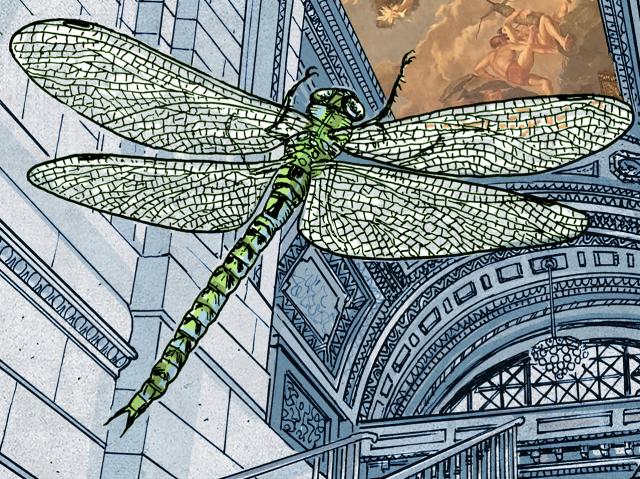
Dragonflies
Transcript below
JESSICA LEE WARE: My earliest dragonfly memory was growing up in Canada—my nana lived on a lake—being at the dock, and her seeing dragonflies land:
“Oh, aren’t these beautiful? They’re so colorful. Don’t fall asleep, ‘cause they’re gonna sew your lips shut!” [Laughs.]
PETER KUPER: Dr. Jessica Ware is Associate Curator of Invertebrate Zoology at the American Museum of Natural History in New York.
WARE: Dragonflies play a really big role in many legends and lore across cultures. Sometimes with a really positive connotation, sometimes with a really negative connotation. My nana, her idea about dragonflies was very negative: that they were “darners”—like “darning needles.” Because people looked at the egg-laying apparatus of dragonflies, which looks sort of like a sewing needle, and they kind of go up and down into plant material to lay their eggs—kind of like a darning needle.
These stories are things that are passed down through time. There’s a lot of oral tradition about dragonflies.
KUPER: Dragonflies have inspired the stories we tell, and also the things we build.
WARE: The field of bio-inspired design has turned to dragonflies in the past and I think it will continue. Their eyes and their neck are attached by clasps behind the eyes and clasps on the neck that interlock together—kind of like Velcro. And when they’re flying that keeps their head in place. But when they land, they unclasp so they can move their head around and look to see if there’s predators or prey. People have used that head arrestor system to actually improve Velcro.
KUPER: The unusual detachable head and powerful eyes of the dragonfly allow them to see 360 degrees, which makes them one of nature’s most effective predators.
WARE: Dragonflies intercept their prey like lions. So, they don’t fly to where their prey is now, they fly to where their prey will be.
They’re not picky. They will eat anything. They’ll eat butterflies. They’ll eat any type of fly. Black flies, horse flies. Mosquitoes. Bees. Mantises. You name it. They eat each other. They will eat anything.
KUPER: And whatever it is dragonflies are devouring, they’ll take it to go.
WARE: They use chewing mouthparts and they can grab their food with spines on their legs, and bring the food in and eat while they’re flying, so as they’re flying they’re constantly munching.
End of Transcript
Music courtesy of David Rothenberg: "Insect Drummers 2" from BUG MUSIC (2013), published by Mysterious Mountain Music (BMI).